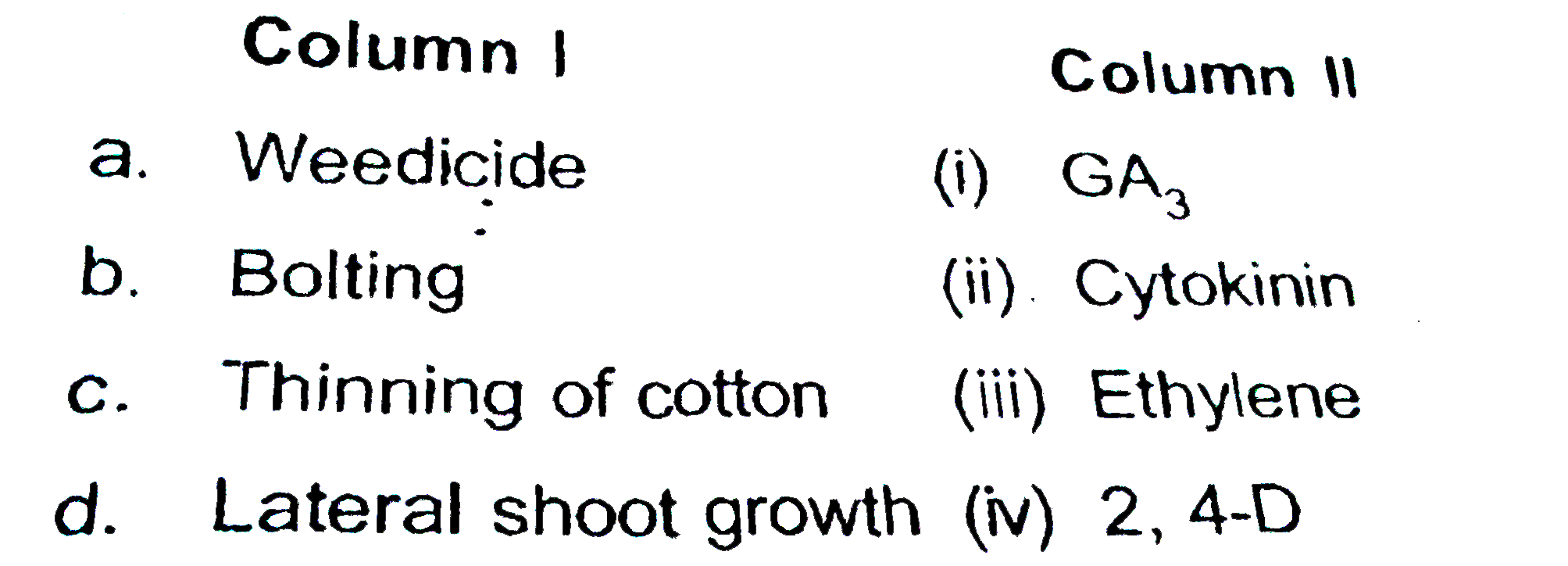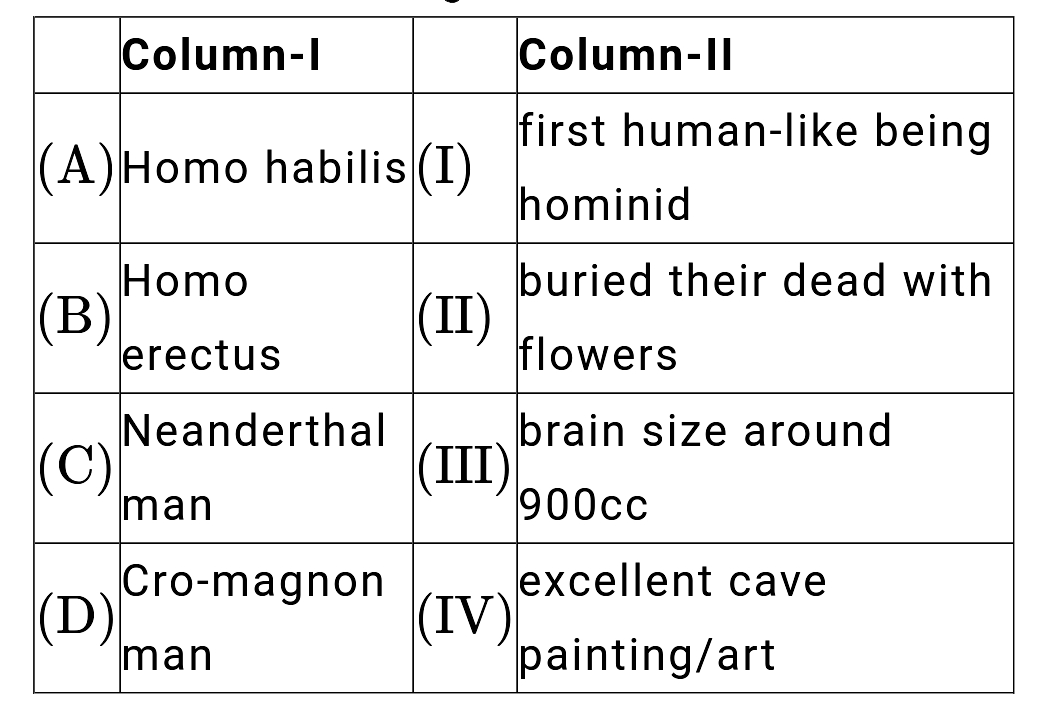Match the following columns.
Column-I a. stem tendrils b. thorns c. leaf tendrils
Column-II (i) pumpkins (ii) citrus (iii) cucumber (iv) bougainvillea (v) peas (vi) grapevines
a(i,ii,vi), b(iii,iv), c(v)
a(i,iii,vi), b(ii,iv), c(v)
a(i,v), b(ii, iii), c(iv,vi)
a(iii,iv), b(i,ii,vi), c(v)
To solve the matching question, we need to identify which items in Column-I correspond to the correct items in Column-II based on the characteristics of each plant structure.
1. Identify Stem Tendrils:
- Stem tendrils are slender, thread-like structures that arise from the modification of the stem. They are primarily used for support in climbing plants.
- Examples of plants with stem tendrils include cucurbits like pumpkins, cucumbers, and grapevines.
Match:
- a. Stem Tendrils → (i) Pumpkins, (iii) Cucumber, (vi) Grapevines
2. Identify Thorns:
- Thorns are pointed, woody structures that are also a modification of the stem. Their main function is to provide protection against herbivores.
- Thorns can be found in plants like citrus and bougainvillea.
Match:
- b. Thorns → (ii) Citrus, (iv) Bougainvillea
3. Identify Leaf Tendrils:
- Leaf tendrils are similar in function to stem tendrils but originate from the modification of leaves. They also help in climbing.
- Peas are a classic example of a plant that has leaf tendrils.
Match:
- c. Leaf Tendrils → (v) Peas
Final Matching:
- a. Stem Tendrils → (i) Pumpkins, (iii) Cucumber, (vi) Grapevines
- b. Thorns → (ii) Citrus, (iv) Bougainvillea
- c. Leaf Tendrils → (v) Peas
Summary of Matches:
- a → (i), (iii), (vi)
- b → (ii), (iv)
- c → (v)
- Stem tendrils are slender, thread-like structures that arise from the modification of the stem. They are primarily used for support in climbing plants.
- Examples of plants with stem tendrils include cucurbits like pumpkins, cucumbers, and grapevines.
- a. Stem Tendrils → (i) Pumpkins, (iii) Cucumber, (vi) Grapevines
- Thorns are pointed, woody structures that are also a modification of the stem. Their main function is to provide protection against herbivores.
- Thorns can be found in plants like citrus and bougainvillea.
- b. Thorns → (ii) Citrus, (iv) Bougainvillea
- Leaf tendrils are similar in function to stem tendrils but originate from the modification of leaves. They also help in climbing.
- Peas are a classic example of a plant that has leaf tendrils.
- c. Leaf Tendrils → (v) Peas
- a. Stem Tendrils → (i) Pumpkins, (iii) Cucumber, (vi) Grapevines
- b. Thorns → (ii) Citrus, (iv) Bougainvillea
- c. Leaf Tendrils → (v) Peas
- a → (i), (iii), (vi)
- b → (ii), (iv)
- c → (v)
Topper's Solved these Questions
Similar Questions
Match the following column-I and Column-II-:

View SolutionMatch the following columns I with column II.

View SolutionMatch the following column I with column-II :

View SolutionMatch the following (column-I with column-II)

View SolutionMatch the following (column-I with column-II)

View SolutionMatch the following (column-I with column-II)

View SolutionMatch the following (column-I with column-II)

View SolutionMatch the following column I with column II :

View SolutionMatch the following (Column I with Column II).

View SolutionMatch the following (Column I with Column II)

View Solution
